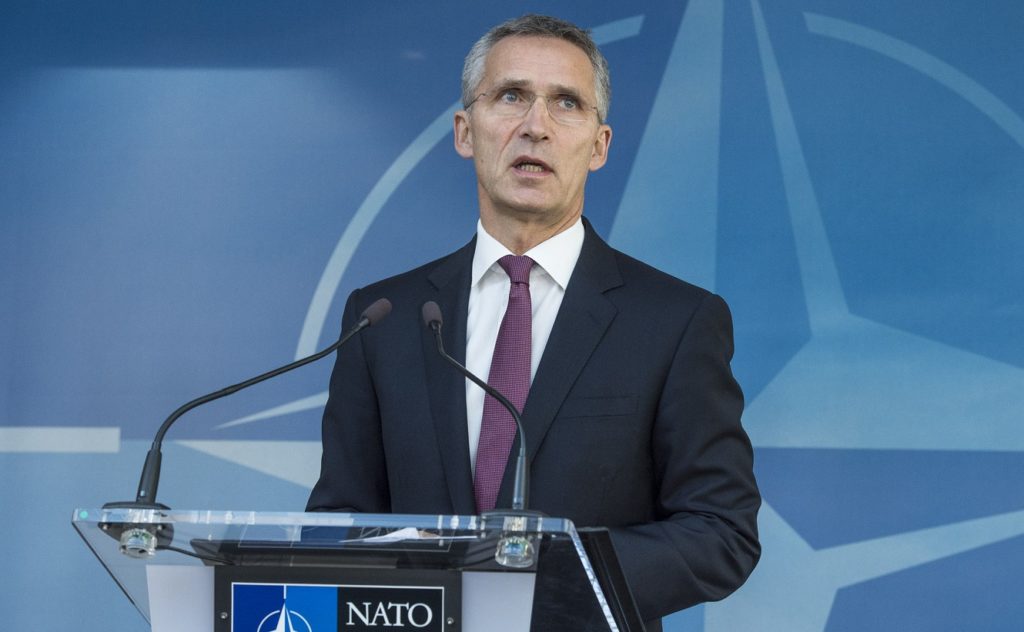The Trump Administration Between NATO, Putin, and Western Values

While Donald Trump did not become president-elect on the strength of his critique of our transatlantic alliance, how his now-forming administration translates his campaign positions on NATO into policy remains critically important. Trump is coming to office at a time when the democratic West and its value structure are under attack from a revisionist Russia on one hand and the jihadist Islamic State on the other. NATO has been the most important symbol of and instrument for American leadership of the West. The future leader of the alliance now has questioned whether it continues to serve U.S. interests.
The Trump critique of NATO consists of two key elements. One of them is a very familiar complaint that the allies do not pay a fair share of the cost of the alliance — the evergreen burden-sharing issue.
The second is perhaps a more profound critique of the commitment — Article 5 of the North Atlantic Treaty — to regard an attack on one ally as an attack on all, and to contribute to the defense of the ally under attack. In addition, Trump’s mutual admiration relationship with Russian President Putin has raised questions about how reliable his administration would be in responding to further revisionist Russian aggression in Europe.
The burden-sharing issue is nothing new. In an alliance of big, medium, and small democratic powers, the smaller allies will in every case depend on the stronger ones to one degree or another. In an alliance of democracies, each country of any size will usually attempt to get the highest level of security at the lowest price. It’s a security marketplace in which democratic leaders consistently attempt to get the best deal for their countries.
The United States has lobbied allies to do more over the nearly seven decades since NATO’s founding. Most recently, following Russia’s seizure of the Crimean region of Ukraine and its military support for pro-Russian separatists in Ukraine, the Obama administration urged U.S. allies to increase their levels of defense spending to 2 percent of their gross domestic product (GDP) and to increase investment in defense equipment as well.
The Trump approach differs from recent U.S. burden-sharing policies in one significant way. He articulated the threat that allies who didn’t pony up couldn’t count on the United States coming to their defense if they were attacked. This carried burden-sharing into the wider arena of alliance commitments. While the North Atlantic Treaty does not specify exactly what each ally will contribute to the alliance, it does pledge all to come to the assistance of an ally under attack. This “mutual defense commitment” is the heart of the alliance. Cut off from its most important source of lifeblood, the heart would stop beating.
Almost one year ago, The Washington Post noted the apparent affinity between Donald Trump and Vladimir Putin. Post editorial writers noted:
What the two men share, and recognize in each other, goes beyond strong polling numbers, an affinity for incendiary language and a contempt for those (with President Obama leading the list) they regard as weak. What really attracts them is a common worldview in which money talks and democratic norms are for suckers.
The Trump-Putin mutual admiration society raises questions about the very fundamentals of transatlantic security relations and the very nature of “the West.”
Perhaps the future of the West comes down to a very fundamental choice: Should the United States and its European partners acquiesce to Russia’s geopolitical demands for a buffer zone between its own territory and the democratic West? Or should the West assert, with actions as well as words, the liberal values that they hoped would shape post-Cold War Europe?
Putin has made it very clear: he does not accept the Western model of European security that he says the United States, NATO and the European Union tried to impose on Europe at a time of Russian weakness. Western nations and their leading institutions — NATO and the European Union — now face the question of how best to defend the values and interests they claim to hold dear, while simultaneously not increasing the chances of a new and prolonged Cold War, or even a hot one. The new Trump administration will be challenged to determine how it wishes to strike this balance.
While the external threats to the West are real — far more than risks and challenges — internal weaknesses could block Western democracies from working together to deal with them. For NATO, the biggest weakness could emerge from the policies of the new administration.
If transatlantic security solidarity fails in NATO, the future of the West would be in doubt. The transatlantic community is more than ever dependent on the right choices being made on both sides of the Atlantic. The United States is not currently inclined to ride in on its white horse to rescue the old continent. This will not be required, if the old continent can revive itself and face up to the new internal and external threats. But perhaps the best answer will be a true re-dedication to transatlantic cooperation stimulated by a sense of shared values and interests to bring out the best on both sides of the Atlantic. Whether the new U.S. administration is prepared to or even capable of leading such a renewal remains an open question.
Stanley R. Sloan is author most recently of Defense of the West: NATO, the European Union and the Transatlantic Bargain (Manchester University Press, 2016). He is a Nonresident Senior Fellow at the Atlantic Council of the United States and a Visiting Scholar at Middlebury College.
Image: NATO

